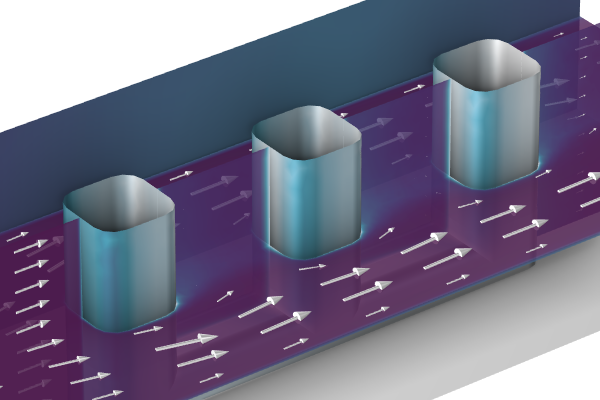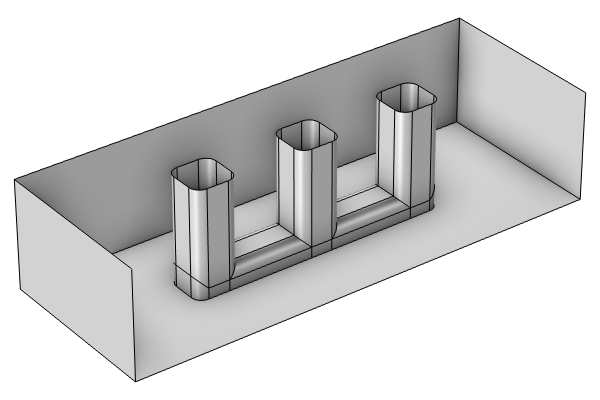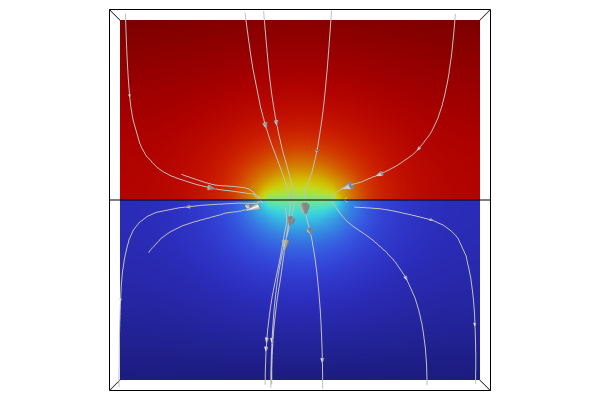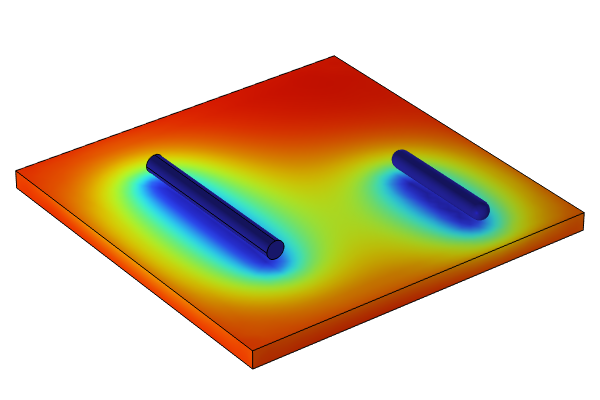Introduction to Modeling Corrosion
This course is an introduction to modeling corrosion using COMSOL Multiphysics® and the add-on Corrosion Module. In this course, we will cover the the two main branches of corrosion modeling: galvanic corrosion processes and cathodic protection systems. We will review the key equations and theory behind the interfaces you will use as you get started with building your models. You will be guided through the setting up and solving of various applications, including how to model current distribution, deforming geometry, thin film electrolytes and conductors, edge electrodes and more to gain valuable insights on best practices and techniques while modeling corrosion in COMSOL Multiphysics.

Modeling to see the impact of primary, secondary, and tertiary currents on a wire electrode embedded in electrolyte with fluid flow.
An overview of the what is covered throughout the course is as follows:
Part 1 - Introduction: Theory, Equations and Interfaces
- Introduction to the Corrosion Module and interfaces
- Fundamentals of corrosion modeling
- The importance of current distribution when modeling corrosion
Part 2 - Boundary Conditions, Polarization Curves, and Material Library
- Boundary conditions to simulate reactions at the metal surfaces
- Electrode kinetics using pre-defined equations, user-defined equations, or polarization curves
- The built-in corrosion material library in COMSOL Multiphysics
Part 3 - Moving Interfaces
- Introduction to the Deforming Geometry (Moving Mesh) method
- Introduction to the Level Set and Phase Field interfaces
Part 4 - Modeling Geometrically Thin Features
- Modeling thin film electrolytes and conductors
- Using edge electrodes in pipelines
Part 5 - Numerical Methods: FEM, BEM, and Solvers
- Using FEM vs. BEM in corrosion modeling
- Manually changing the solver and discretization settings
Upon completing the course, you will have a thorough understanding of the workflow for modeling corrosion using the COMSOL® software. You will also learn the various specialized physics features available for modeling different corrosion applications. We recommend following this with our collection of blog posts about corrosion and corrosion protection systems.
Submit feedback about this page or contact support here.






